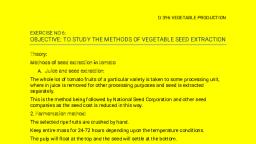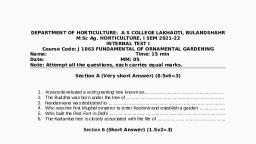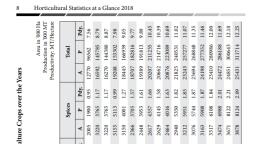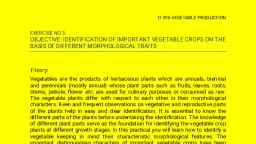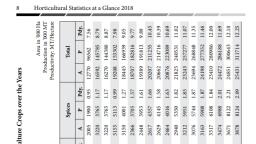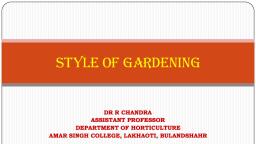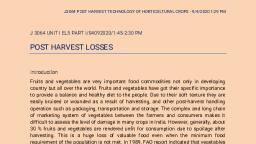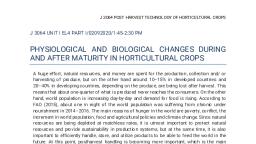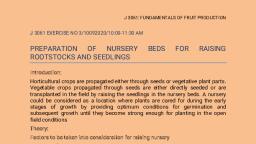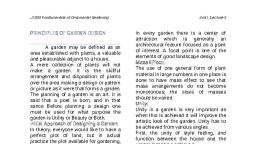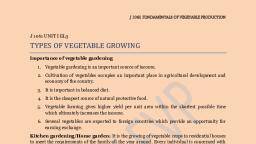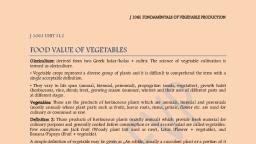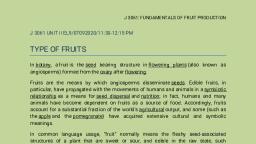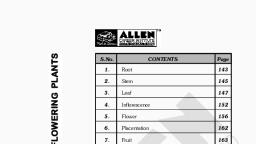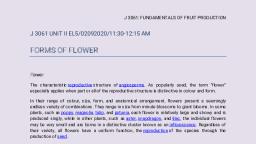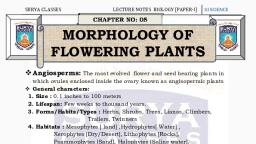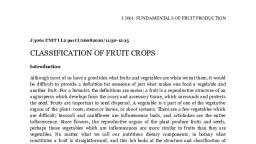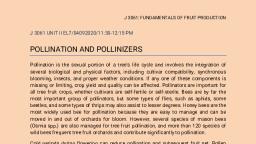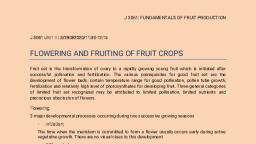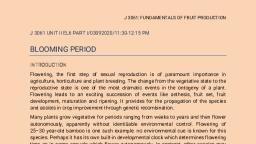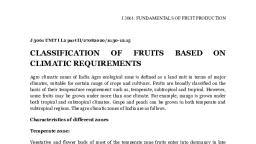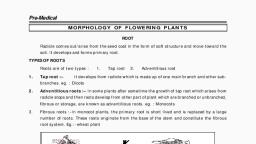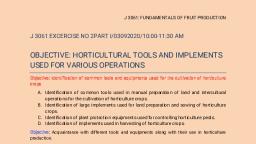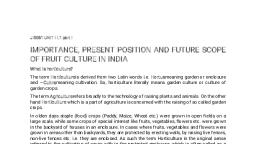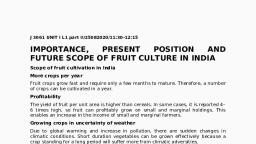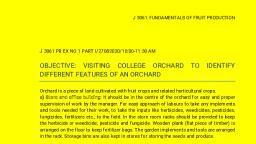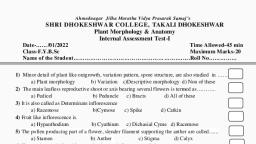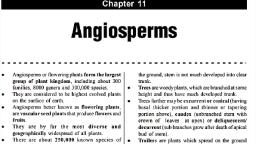Page 1 :
J 3061: FUNDAMENTALS OF FRUIT PRODUCTION, , J 3061 UNIT Il EL4/01092020/11:30-12:15, , INFLORESCENCE, , , , What is Inflorescence?, , A flower is a significant part of a plant tailored for reproduction. In addition, it is an essential part of, the bouquet, decorations, celebrations, garden, rituals, etc. Among different parts of a plant, the, flower is the most attractive part due to its beauty and fragrance., , Types of Inflorescence:, , An inflorescence may either be of racemose or cymose types., , A. Racemose or Indefinite or Indeterminate Type of Inflorescence:, , The arrangement in which the youngest flower is present near the apex and older flower towards the, base, i.e., in acropetal succession. So, in this case the growing point does not stop the growth and, forms continuously the lateral flowers. It is of following types:, , 1., , Raceme: When peduncle bears many pedicellate flowers in an acropetal manner, e.g.,, Delphiniumajacis, Veronica, etc., , Spike: A raceme with sessile flowers, e.g., Adhatoda vasica, Callistemon, etc., , Spikelet: Small spikes arranged in a spike, raceme or panicle manner. Each flower, consists of an awned bract, three stamens and an ovary with two feathery stigmas, e.g.,, Triticum., , Panicle: Branched raceme, e.g., Delonix regia., Catkin: Pendant spike with unisexual flowers, e.g., Morus alba, Salix, etc., , Spadix: Spike with a fleshy axis, enclosed by one or more large bracts called spathes,, e.g., Musa, Pistia, etc., , Corymb: Raceme, in which all the flowers reach the same level due to more elongation, of the pedicel of older flowers, e.g., Iberis amara., , Umbel: When pedicellate flowers arise from a common point as in members of, Umbelliferae or Apiaceae., , , , DR R CHANDRA, ASSISTANT PROFESSOR, DEPARTMENT OF HORTICULTURE, AMAR SINGH COLLEGE, LAKHAOTI, BULANDSHAHR, , 7) Edit with WPS Office
Page 2 :
B., , J 3061: FUNDAMENTALS OF FRUIT PRODUCTION, , 9. Capitulum or Head: When numerous, small, sessile flowers are aggregated to form a, dense inflorescence as in members of Compositae or Asteraceae., , , , . | Panicle, Raceme Spike Spikelet Catkin Spadix Corymb Umbel Head or Capitulum, Fig. 75. Types of racemose inflorescence., , Cymose or Definite or Determinate Type of Inflorescence:, , When the apical growth of the floral axis is checked by the formation of a flower, it is called, cymose inflorescence. Flowers are arranged in basipetalous manner, i.e., the terminal flower is, oldest and young flowers are present on lower side. It is of following types:, , 1. Monochasial or Uniparous Cyme: When peduncle bears a single terminal flower, and a, single lateral branch which also bears a single terminal flower. It is of following three, types:, , a) Helicoid or Bostryx: A monochasial cyme in which successive lateral branches develop, only towards one side of the main axis, e.g.. Hamelia patens, Juncus, etc., , b) Scorpioid or Cincinnus: When successive lateral branches develop on both the sides of, main axis in alternate manner, e.g.. Heliotropium., , c) Rhipidium: A flat scorpioid cyme in which all the flowers are present at the same level,, e.g., Solanum nigrum., , 2. Dichasial or Biparous Cyme: When peduncle bears a terminal flower and a pair of, opposite lateral branches which also bear terminal flowers, e.g., Stellaria media., , 3. Polychasium or Pleiochasium or Multiparous Cyme: When the peduncle bears a single, terminal flower and just below it are present more than two lateral branches bearing, terminal flowers, e.g., Calotropis procera., , q ¥ ¢, Ps q, ¢g, q, ¢, Uniparous, (helicoid), , Uniparous Uniparous Rhipidium Biparous Multiparous, (simple) (scorpioid) Fig. 76. Types of cymose inflorescence., , , , , , , , DR R CHANDRA, ASSISTANT PROFESSOR, DEPARTMENT OF HORTICULTURE, AMAR SINGH COLLEGE, LAKHAOTI, BULANDSHAHR, , 7) Edit with WPS Office
Page 3 :
J 3061: FUNDAMENTALS OF FRUIT PRODUCTION, , , , , , DR R CHANDRA, ASSISTANT PROFESSOR, DEPARTMENT OF HORTICULTURE, AMAR SINGH COLLEGE, LAKHAOTI, BULANDSHAHR, , Edit with WPS Office

